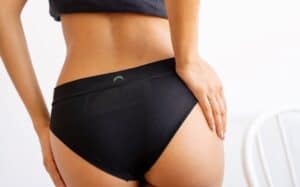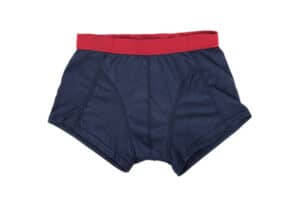Generally, we hardly give it a thought – what visually appeals to us or attracts us, we end up buying it, right?
Have you ever considered what impact your decision would have on you in the long run?
Of course, it’s not an investment in some real estate property, but still, you gotta weigh some pros and cons to decide which fabric to opt for.
Now, the one-fits-all strategy isn’t going to work here; that’s because the priorities vary a great deal.
One sitting on a couch, watching TV all day, would go for fabric suitable to him, and the choice made by one working out in hot summer would absolutely be different.

Everyone’s individualistic activities will decide which one of the underwear he should be buying.
It all comes down to physical exertion on a personal level.
We’ll keep this guide generic and leave it to our audience to decide on their own which category they fall in.
Read this guide till the end to understand which fabric suits your personality.
Let’s dive right in!
Before we proceed any further, we need to draw a clear line to see what actually it means when we say “Polyester”. It sounds more of a chemical name, right? It originally is.
Polyester is a synthetic fibre made of terephthalic acid and ethylene glycol. Monomers of these compounds join together and form long chains of threads; these threads are collectively Polyester.
Does it look like you’re sitting in a chemistry class? No!
The definition is highlighted to ensure that you’re clear on how it’s made, and we made it simple for you to absorb.
Now, Nylon is pretty much made the same way, and it’s too a synthetic fibre made in laboratories.
Here comes the chemistry again – Nylon, like Polyester, is formed by combining monomers, creating long chains or thread-like structures. Still, the components it’s composed of are different: adipic acid and hexamethylenediamine.
You’re not supposed to memorize these names, don’t worry!
The sad part with these fabrics is that they can’t be recycled. “Can’t be” shouldn’t be used here; I’d rather say “, They’re not recycled” – It’s because the costs recycling puts forth is more than originally manufacturing the pieces from scratch.
So, the industries relying on their economy don’t bother to recycle any of these fabrics.
Down here, we’ll dig into the features each of the fabrics carries,
Texture
Texture-wise, Nylon wins the battle here because it’s softer, and if you’re a guy who likes it easy and comfy down there – Nylon underwear is the best option for you.
On the other hand, Polyester isn’t as soft, but its texture somehow resembles the parachute stuff we usually wear. You’ll definitely love it if you’re a gym enthusiast because most guys who work out opt for its durability and resilience.
Secondly, it’s easy to wash, so it, any day, would be a top choice for athletes.
Airy
Your underwear has got to be airy because otherwise, it will get you a rash on your skin and, if worse – an infection.
Nylon isn’t airy. So, if you plan to buy it for a sunny day outside, don’t! Because you’ll regret your decision.
It blocks the air and will irritate if worn in a hot environment. You better go for it if it’s some sort of an office job where not much physical exertion is demanded.

Polyester is known for its wicking feature. As said earlier, it’s a top choice for gym athletes. It simply is because it spreads the sweat over the fabric and allows it to evaporate.
In this regard, it lets in air and is comfier than Nylon.
Resistance to Water
Both of these fabrics aren’t entirely water-resistant.
So, if you’re planning to jump into the pool with your boxers on, it isn’t a good idea.
To some extent, both of these fabrics possess water-resistant abilities, but this only stands true as far as it’s the sweat beads across their surface.
The higher the concentration gets, the poorer it gets in its ability to resist water.
I hope this made sense!
The wicking feature is what we call it; Nylon and Polyester each spreads the droplets of water across the surface to let the air evaporate and dampen the surface.
Odour
Odour is another factor that helps us decide which underwear we should buy.
As we said earlier, Polyester is easily washable, which is why athletes prefer this option. Carrying it around is easy and doesn’t demand much effort. But the only problem it comes up with is odour retention.

Even after a wash, the body odour gets absorbed into its fibres, so you may find it smelly the next time you wear it, which is absolutely normal with such fabric.
This isn’t the case with Nylon, however, because it doesn’t absorb any smell or anything.
The washing process takes a bit of a time, relatively more than the Polyester, but it’s actually worth it because it doesn’t carry the smell around.
Life
Do you want to add life to your underwear?
Any of them would work because Nylon and Polyester are both products made synthetically in laboratories with chemicals, which to some extent are plastics.
The life of plastic is massive. Once you get hold of one, you will indeed be carrying it around with you for a long time.
Price
Although, the pricing has more to do with the brand you’re buying your underwear from.
But generically speaking, Nylon costs more than Polyester. That’s because the production of Nylon involves expensive processes, so the price consequently soars.
While Polyester relatively is cheaper and that’s one of the major reasons why it’s everywhere.

Economics plays a massive role!
Final Verdict: The bottom line, each has its pros and cons. You’re the one to decide which one suits your personality based on the type of work you do.
If I were asked to select one of them, I would any day have gone with the Polyester because I’m just too lazy to invest much time washing it off.
Nylon is definitely soft but expensive too. So, it’s Polyester for me!
Decide one, staying congruent to your lifestyle!





